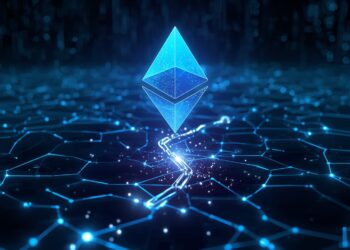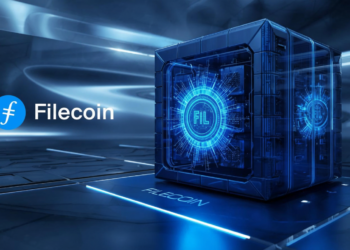The Web3 tech stack represents a new era of the internet, where decentralization, security, and user empowerment thrive. With an entire ecosystem built around blockchain technology, understanding its components is crucial for anyone looking to navigate this digital frontier.
The Building Blocks of a Decentralized Future
The Allure of Decentralization: Why Web3 Matters
Decentralization offers a solution to many issues found in traditional web structures. With Web3, users regain control of their data and transactions without relying on a central authority. This model promotes transparency and security, making digital interactions safer and more direct.
Beyond Crypto: Exploring the Underlying Technology
While cryptocurrencies like Bitcoin and Ethereum led the Web3 revolution, the technology underpinning them covers much more ground. Tools like decentralized finance (DeFi) and non-fungible tokens (NFTs) showcase the potential of blockchain far beyond mere financial transactions.
Roadmap: What We’ll Cover in This Deep Dive
This article will explore key components of the Web3 tech stack, including nodes, consensus mechanisms, blockchains, smart contracts, decentralized applications (dApps), and the development ecosystem. Let’s dive in.
1. Nodes: The Backbone of Web3 Networks
Types of Nodes: Full Nodes, Light Nodes, and More
In a blockchain network, nodes play a vital role. They can be categorized as:
- Full Nodes: Store the entire blockchain and validate transactions.
- Light Nodes: Hold only part of the blockchain, relying on full nodes for verification.
Node Operation: Understanding the Mechanics
Nodes communicate with one another, sharing information and ensuring consensus across the network. This collaboration allows transactions to be recorded and verified in real-time, maintaining the integrity of the blockchain.
Choosing the Right Node: Factors to Consider
When selecting a node, consider factors like:
- Network Type: Public versus private.
- Resources Needed: Hardware and connectivity requirements.
- Use Case: What functions you want the node to perform.
2. Consensus Mechanisms: Securing the Network
Proof-of-Work (PoW): The Traditional Approach
PoW is the original method for validating transactions. Miners solve complex puzzles to add new blocks, which consumes significant energy and resources.
Proof-of-Stake (PoS): A More Energy-Efficient Alternative
PoS addresses PoW’s energy concerns. Validators are chosen to create blocks based on the amount they “stake.” This approach reduces environmental impact while maintaining security.
Emerging Consensus Models: Exploring the Future
Innovative models like Delegated Proof-of-Stake (DPoS) and Proof-of-History (PoH) are evolving the consensus landscape, optimizing efficiency and transaction speeds.
3. Blockchains: The Immutable Ledger
Blockchain Architecture: Blocks, Chains, and Transactions
Blockchains consist of linked blocks, each containing transaction data. Each block is cryptographically secured, creating a tamper-proof chain.
Different Blockchain Types: Public, Private, and Consortium
- Public Blockchains: Open to everyone, fostering transparency (e.g., Bitcoin).
- Private Blockchains: Restricted access for specific users, ideal for enterprises.
- Consortium Blockchains: Controlled by a group, providing shared governance.
Blockchain Scalability Challenges and Solutions
Scalability remains a major hurdle. Solutions like sharding and layer-two protocols enable networks to handle more transactions without sacrificing speed or security.
4. Smart Contracts: Automation on the Blockchain
Smart Contract Fundamentals: Code is Law
Smart contracts are self-executing agreements. They automatically enforce terms when specific conditions are met, removing the need for intermediaries.
Real-World Applications of Smart Contracts: Examples in Finance, Supply Chain, etc.
- Finance: Automating loans and payments.
- Supply Chain: Tracking goods and verifying transactions.
Security Considerations for Smart Contracts: Audits and Best Practices
While powerful, smart contracts can be vulnerable. Regular audits and following coding best practices help prevent exploits and ensure stability.
5. Decentralized Applications (dApps): Building on the Foundation
Key Characteristics of dApps: Decentralization, Transparency, Security
dApps rely on blockchain technology, verifying transactions through decentralized networks. These features enhance user trust and data integrity.
Popular dApp Examples: DeFi, NFTs, DAOs
- DeFi: Platforms like Uniswap for decentralized trading.
- NFTs: Marketplaces like OpenSea for unique digital assets.
- DAOs: Organizations like MakerDAO that operate without central leadership.
Developing Your Own dApp: Challenges and Opportunities
Building a dApp involves overcoming hurdles such as ensuring scalability and security while leveraging available resources. The potential for innovation in this space is vast.
6. The Web3 Development Ecosystem: Tools and Technologies
Essential Programming Languages: Solidity, Rust, etc.
Developers use languages like Solidity (for Ethereum) and Rust (for Solana) to build smart contracts and dApps, making programming skills essential.
Development Frameworks and Libraries: Popular Choices and Their Use Cases
Frameworks such as Truffle and Hardhat streamline the development process, helping coders create, test, and deploy smart contracts efficiently.
Resources for Web3 Developers: Communities, Documentation, Courses
Many resources are available for aspiring Web3 developers:
- Communities: Join forums and Discord groups.
- Documentation: Review official project docs.
- Courses: Enroll in online classes focused on blockchain and smart contract development.
Conclusion: Navigating the Web3 Landscape
Key Takeaways: Essential Concepts and Their Implications
Understanding nodes, consensus mechanisms, blockchains, smart contracts, and dApps is vital for grasping the Web3 ecosystem. Each component works together to build a more decentralized internet.
Future Trends: Anticipating the Evolution of Web3
As technology progresses, expect advancements in scalability, privacy, and user experience. The landscape of Web3 is set to grow and change continually.
Getting Started with Web3 Development or Exploration
Begin your journey into Web3 by exploring educational resources, participating in online communities, and experimenting with building your projects. Keep learning and stay informed to navigate this exciting landscape.

























